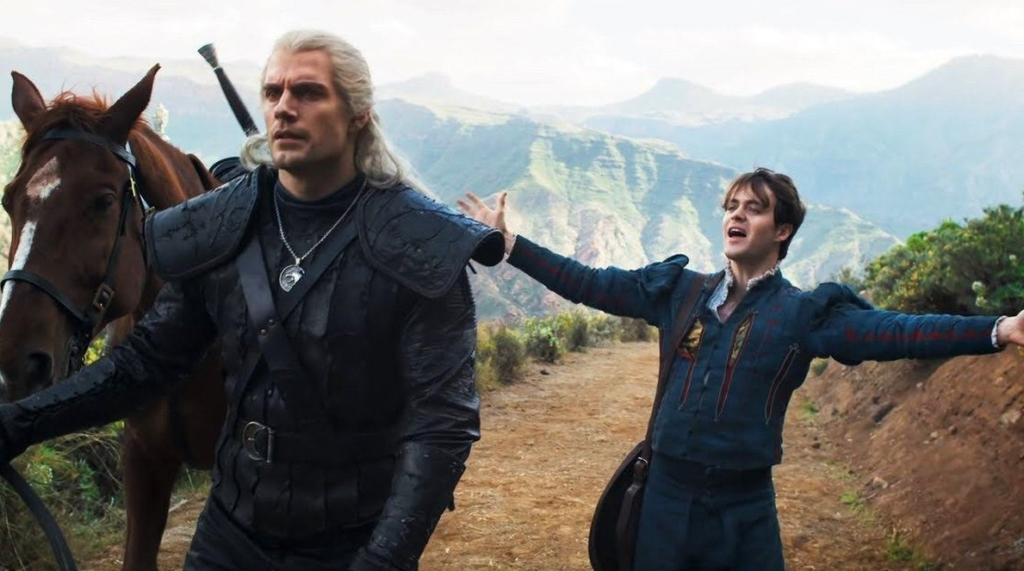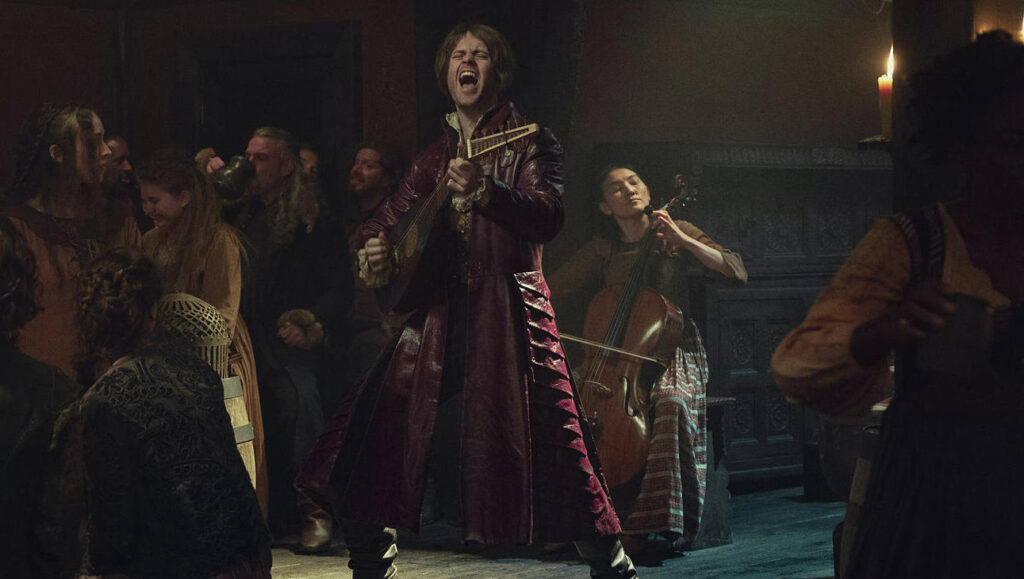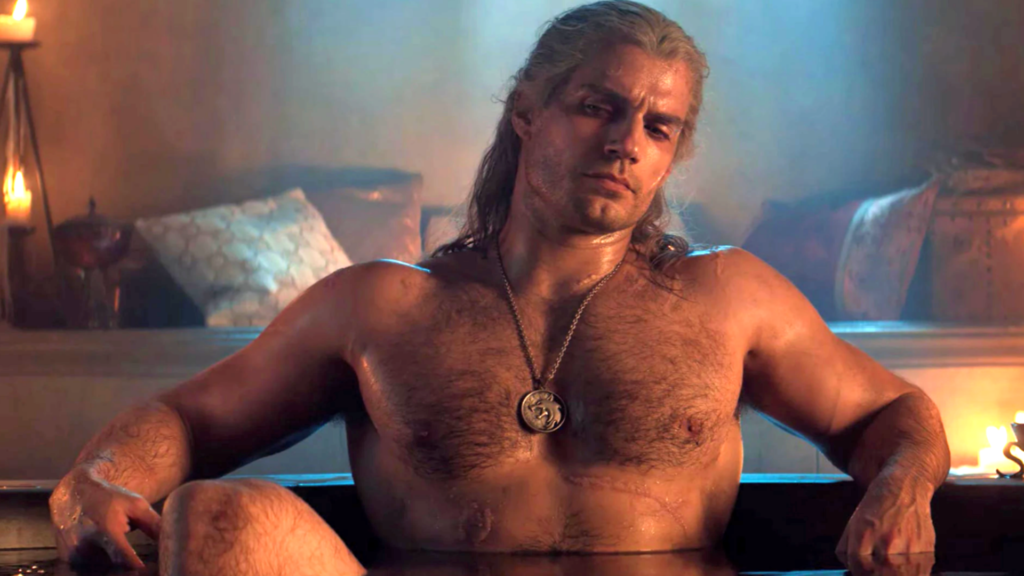The Witcher Season 2 needs to embrace queer male sexuality
The Witcher Season 2 is fast approaching and now, more than ever, does the show need to embrace queer sexuality in a much more explicit way.
The explosive success of Netflix’s The Witcher gave the internet a lot to talk about with beautifully choreographed fight scenes, catchy ballads, and smoldering sorceresses. There was also something about Henry Cavill in a bathtub? Many conversations were had about the show’s approach to queer representation, especially within the broader context of LGBTQ+ inclusion in the fantasy genre.
The genre has predominately been a cisgender and heterosexual space. The default setting on fantasy, particularly in TV adaptations, tends to be faux-medieval worlds with the same archaic sexual and social codes. These worlds are filled with magic and mythical beings, but the existence of queer people is seemingly impossible.
There has been a steady increase in LGBTQ+ representation within the genre in the past decade. According to showrunner Lauren Schmidt Hissrich, The Witcher contributes to this trend. Hissrich confirmed that the show would have LGBTQIA+ characters in a Reddit AMA. She did not provide further details regarding those characters. However, for season two, Cassie Clare has been cast as Philippa Eilhart, who is canonically a lesbian. Her lesbianism will likely be explored on-screen – hopefully with Triss, since they were romantically entangled at one point.
The inclusion of queer characters in the new season is unsurprising. The source material features several prominent queer characters. In addition to Philippa being a lesbian, Ciri and Triss are both bisexual. As the show’s story develops, Ciri’s sexuality will probably be explored in greater detail, thoughbased on the hints dropped by Hissrich, I don’t expect season two to deal with it.
However, there is a flaw in the representation within The Witcher source material: there are no queer men. This is an ongoing problem within the fantasy genre. The queerness of women is often explored, usually by cis straight men, but queer men are practically non-existent.

The Witcher series is lacking in positive queer representation for men. In the Season of Storms, Sorel Degerlund, the book’s antagonist, an evil sorcerer, claims he would be gay if it helped him advance his career. In The Witcher 3: Wild Hunt, Geralt encounters Mislav. Mislav is a hunter in White Orchard who was exiled for a gay relationship with the local lord’s son Florian. After the relationship was found out, Florian committed suicide. The only queer representation of men within the series is loaded with harmful tropes: a queer villain or tragic lovers.
However, there is also hope that The Witcher will do fan service and reveal that Jaskier is queer. Many people are pinning their hopes on the showrunners revealing that Jaskier, the witty bard who serves as Geralt’s faithful traveling companion, is bisexual. Tumblr user percilout made a painstakingly lengthy analysis of why they think Jaskier is bisexual – it is an excellent breakdown of a lot of the reasoning often cited in fan theories. The gist is that Jaskier is flamboyant, wears bright colours, and appears smitten with Geralt. The famous bath scene also shows Jaskier making a quip about Geralt letting him “rub chamomile on [his] lovely bottom.” As a result, many people have shipped Geralt and Jaskier since The Witcher’s first season
At first pass, it is hard not to interpret Jaskier as queer-coded. His characterisation has a lot in common with many stereotypes and tropes associated with queer characters. Flamboyance and bright colours are commonly associated with on-screen depictions of queer characters. For instance, Timon from The Lion King was frequently interpreted as queer due to his flamboyant personality.
These stereotypes in on-screen depictions of queerness result from the legacy of queer-coding in Hollywood. Queer-coding is when a character is not explicitly stated to be queer, but enough subtext is provided to an audience to interpret them as queer. This was the only way queer characters could exist in films in the past.

The Hays Code, a set of industry guidelines for the self-censorship of content in films released between 1934 and 1968, can be thanked for this. The Hays Code prohibited depicting what it deemed to be inappropriate content, which included queerness. The Hays Code was abandoned in 1968. However, it still has a long-lasting legacy of influencing how queerness is depicted on screen.
Unsurprisingly, queer viewers interpret Jaskier as queer. We have been raised on queer-coded TV with very little explicit queer representation. We have suffered through seeing the same tired tropes play out whenever there is queer representation. I have not forgiven Buffy the Vampire Slayer for driving a stake through my heart by killing Tara in a blatant example of the “bury your gays” trope.
The pining hope over Jaskier’s queerness is emblematic of a generation of viewers desperate for positive queer representation in modern media, especially when it comes to queer men. The likelihood of the showrunners delivering on the ship between Geralt and Jaskier is slim. In an interview with Digital Spy, Hissrich denied any deliberate queer undertone, stating that it is just an example of male friendship.
This crushes any hope of the Geralt/Jaskier ship sure, but not necessarily of Jaskier’s queerness. There is still a possibility that Jaskier is bisexual. It seems very probable that Joey Batey is playing the character as bisexual or pansexual, given that he has been playing the pronoun game in interviews. This has not helped, adding fuel to the fire of Jaskier’s queer-coding.
But perhaps it is a good thing that The Witcher is not delivering on a romantic relationship between Geralt and Jaskier. Jaskier deserves better than the surly emotional illiteracy of Geralt, after all. More seriously, making them romantically involved would be a disservice to the representation of masculinity and male friendship that the series has created. The media has not done an excellent job of showing close male friendships not predicated on toxic interpretations of masculinity. It is dangerous to write every moment of platonic tenderness between men as queer, as it erases the capacity of men to be tender to one another without the expectation of romance.

The Witcher needs to provide more queer representation by exploring the existing canon. However, the show would do itself a disservice if it does not take liberties with the source material to write a queer man into the show. The Wheel of Time has done precisely that by providing more detail to a lesbian relationship merely implied within the source material. The Witcher has not explored Jaskier’s past in greater detail. It would be entirely possible for the showrunners to take liberties to write queerness into his past while also giving on-screen representation to queer men through an interesting side character.
It’s a necessity as it would subvert the stereotypes of masculinity that get applied to the main characters of fantasy shows. They are almost always depicted as being carousing womanisers, or having a destined one true love. Jaskier would be be the perfect candidate for this due to his innate queer-coding. There would finally be a queer character on our screens that doesn’t adhere to the typical tropes applied to queer men in fantasy shows. He is flamboyant and sassy, but wouldn’t use his queerness to gain status or power.
We will have to wait for season 2 of The Witcher to get any answers about the route the showrunners will take for queer sexuality. Until then, remember to toss a coin to your witcher.







